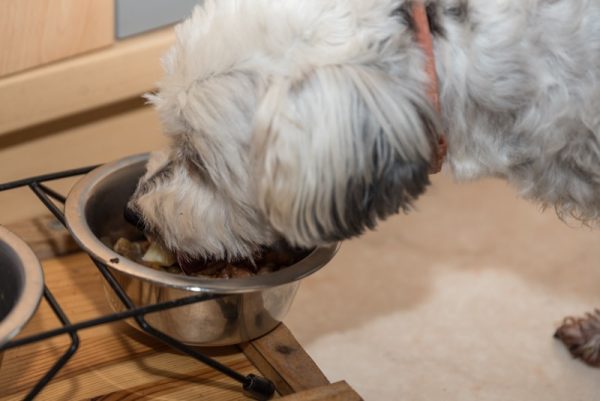Pembroke and Cardigan Corgis are well-known, fluffy-bottomed dogs that were made famous by Queen Elizabeth II (who owned 30 of the dogs during her reign). They have an instantly recognizable silhouette, bat ears, furry behinds, and short legs—but what about their coats?
Many people think of a Pembroke’s sandy tan and white coloring when they think of “Corgi.” However, both the Pembroke and the Cardigan varieties of Corgi have many beautiful coat variations that all sit wonderfully on their frames. In this article, we list all the common coat colors a Corgi can have, as well as some that are very unusual and hardly seen.
We’ve grouped these entries into colors seen in Pembroke Corgis and Cardigan Corgis, so you know what to look out for!

Pembroke Corgi Colors
1. Red

The red-orange coat of the red Pembroke is dominant throughout their body. Red Corgis have no apparent black on their body and often have white faces and undercarriages. “Self” red Corgis have no white on their bodies at all. Those with white are sometimes called red and white, although white is allowed in the “red” category within show rings. You will seldom see a full red Corgi, as they all seem to have white markings on their bodies.
2. Red-Headed Tricolor

There are two types of tricolor Corgis but they are both variations of black, white, and tan coats. The red-headed tricolor corgi has the same orangey red as the full-red Corgi but with large amounts of black all over their body. As the name suggests, the red-headed tricolor will have a red mask on its face, with red, white, and black areas of fur blending into each other.
They will likely have black on their back, a white undercarriage, and red patches throughout, but they must have a red face to be classed as a red-headed tricolor.
3. Black-headed Tricolor

Like the red-headed tricolor, the black-headed tricolor will feature all three colors in their coat but will be predominantly black. This is usually expressed as a black mask over the eyes and extending down the back, sometimes with a gap for a large band of white around the neck.
Flashes of red are evident across the body but separate and distinct on the coat as opposed to the gradual blending seen in the red-headed tri. There are usually small points of red on the head.
4. Sable

The sable coloring is when the red coat color gradually morphs into a dark color as it moves towards the head. They can also have a patch of darker coloring over the back or tail.
These pups can look similar to the tricolor, depending on how dark the body. They also have a “V” shaped widow’s peak on their heads.
5. Fawn

Fawn is a very light version of the red coloring. Fawn and white Corgis can look almost creamy as they often have large bands of white around their necks and along their undercarriage.
Paired with the sparkling light fawn color, these dogs are sometimes mistaken for pure-white dogs, but Corgis do not typically come in pure white.

Cardigan Corgi Colors
1. Black and White

While finding a true black-and-white Cardigan Corgi can be difficult, it’s not impossible. These dogs have large patches of black and white across their bodies, often with a white streak going from their chest to the center of their heads. In addition, black eye and ear patches are a common sight in these panda-like pups.
2. Blue Merle and White

Blue merle is a gorgeous coat color and pattern only available in the Cardigan Corgi. The blue merle color is caused by a gene that dilutes the black color in a Corgi’s coat in patches, causing it to express as a muted blue, mottled with black patches.
This extraordinary color is often paired with blue eyes, giving this dog an even more striking appearance.
3. Brindle and White

Brindle Corgis sport an interesting coat that’s striped and wild. This tiger-like pattern is often shown as a mask over the ears and eyes of the Corgi, with a white patch separating the head from the back. Brindle is a pattern of black stripes and marks over the colored base and is one of the more common Cardigan Corgi colors. The brindle portions can be lighter or darker, sometimes looking almost black.
4. Sable and White

The Cardigan Welsh Corgi also comes in the stunning shaded sable coat color with white markings. The sable color comes from the dog’s genetics specifically at the A locus (agouti).
A dominant gene here allows the sable pattern to come through but other coat color genetics also affect the exact color of the coat.
5. Red and White

Like their cousins, the Pembroke, Cardigan Welsh Corgis come in a red and white color. Typically these pups will have the white markings of the breed, and self-colored dogs are very rare but the breed standard is unclear if they would be accepted in the show ring.
If you’re not sure how to tell if a Corgi is a Pembroke or Cardigan variety look at the ears and tail; the Pembroke has a short tail and pointier ears.

The Markings That Corgis Can Have
The Cardigan and Pembroke Corgis have different marks attributed to each breed:
- Pembroke: Blazes of white on the chest, muzzle, and undercarriage are common. Collars of white around the neck are also commonly seen.
- Cardigan: In addition to any of the base colors, Cardigan corgis can have tan points and still fit within the breed standard. Tan points are considered an acceptable marking rather than a different color. Even more uncommonly, they are permitted to have brindle points.
This creates many acceptable color combinations. An area of dark fur on the face, known as a melanistic mask is also permitted in the show ring.

Rare or Unofficial Colors of Corgi
There are a few seldom-seen colors of Corgis that aren’t part of the breed standard. These include:
- Double merle: dogs with two copies of the merle gene often have very little pigment. Their fur is almost completely white and they often have pink noses, pink skin, and blue eyes. Unfortunately, pups with this genetic pattern have high rates of deafness, eye problems, heart problems, and other health concerns. This is why ethical breeders will not breed two merle dogs together.
- Dilute colors: a color dilution gene is responsible for a variation seen in both breeds. Two copies of this gene lead to coat colors such as blue (not to be confused with blue merle which is a different gene and pattern), blue tricolor, and grays.
- Liver: with two recessive chocolate brown genes a corgi can become liver, liver and white, liver-red, or tri-color liver.
- Other merles: in the Cardigan Welsh Corgi red merle, sable merle, and brindle merle can all occur with the right genetic combination.
Can Corgis be Longhaired?
Yes! Longhaired Corgis occur due to genetics; they have two recessive long-hair FGF5 genes. For both varieties of Corgi, unusually long or fluffy hair is an extremely serious fault in the show ring, so you won’t find serious breeders selecting for this trait.

Conclusion
Corgis have some colors that are allowed to be shown professionally and are in the breed standard and some that are simply colors that can naturally occur in the coat. Pembroke Corgis have fewer variations in color than cardigans, and the coveted blue merle coat is only found in the Cardigan variety.
If you have your sights set on a color of corgi that is not part of the breed standard, beware of breeders that have color as their only selection criteria. In our opinion health and temperament are much more important traits!
See also:
Featured Image Credit: lucioliu, Pixabay



















